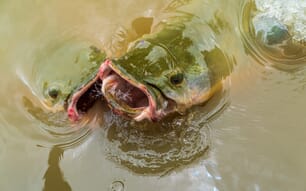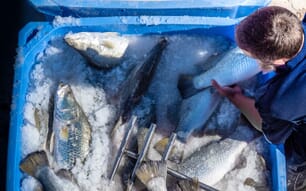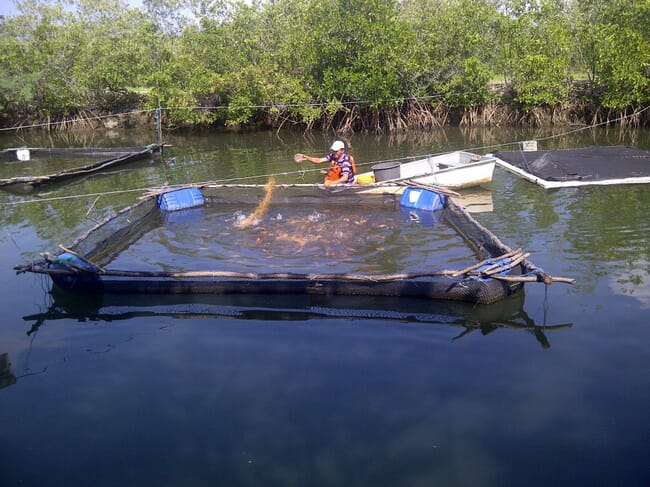
© C Greg Lutz
The keys to economic survival in any aquaculture business are efficiency and profitability, and producers throughout the world should be spending even more time than usual scrutinising these aspects of their operations. Many of the considerations covered here seem obvious, but a careful review of how they relate to your particular operation could be beneficial given current economic trends.
Lethal vulnerabilities
It’s clearly easier to deal with tough economic conditions when your business is already in a strong position going into a downturn, so day-to-day efficiency is always important. However, it may soon be time for many aquaculture producers to adopt a siege mentality until conditions improve. Among other factors, excessively casual management, poor record-keeping, inflexible marketing strategies and insufficient attention to minimising risks can all be considered economically lethal vulnerabilities for the next year or two.
No one that I know of has come up with a sure-fire survival strategy or an “instant fix” approach to fall back on when things get tough in the fish farming business, but many simple strategies can strengthen producers’ positions when prices drop or costs increase. Whenever we talk about boosting profitability in aquaculture there are two simple components involved: increasing revenues or reducing outlays. It’s usually that simple.
Increasing your revenues
How can you, as a fish or shrimp or shellfish producer, increase your revenues? During an economic downturn the options are limited, but finding alternative markets and making some product changes are two strategies to consider. Depending on where you are and what you grow, some market alternatives might include processors that normally work with other species, live haulers, local fish markets, restaurants, fee fishing operations or other outlets. Local markets may exist that are willing to pay for fish of a slightly larger size than what is usually available, or in smaller quantities than many producers are willing to deliver, or at special times during the week. Look for these specialised markets, and focus on those that will be around for the long term. Again, depending on where you are and what you grow, on-site sales or processing may involve legal considerations, including permitting and insurance issues that outweigh any economic advantages.
Another possible alternative that may make sense for some growers is seed stock production. The question of local or regional markets for seed should be considered, along with the possibility of producing fry or larvae in-house. In some circumstances, when considered together these factors may justify diversifying into hatchery operations. For many species, fingerling production doesn’t require a huge investment in a high-tech hatchery. One of the simplest hatchery operations ever demonstrated for channel catfish involved an old cane wagon, a small pump and a little ingenuity.

© Dr James Steeby, Mississippi State University
Aquaculturists in general are some of the most creative business people you will meet, and many existing facilities could probably be adapted for more diversified production with minimal capital outlay. The marketing aspects, however, are what make or break this type of approach to economic survival. Trying to carve out market share in existing supply networks often requires a grower to resign themselves to little or no profit for some period of time, and if a business’ cash reserves are already depleted this strategy may not be possible.
The second component of increasing revenues is fairly obvious – simply increase production. This approach, however, must be pursued in the context of increasing production in relation to costs per unit of production. And, it assumes existing markets and demand can accommodate more product. Many fish, (or shrimp, or shellfish) never make it to market as a result of avoidable diseases, equipment failure or poor management. Unfortunately, this production usually represents substantial investments in feed, labour and overhead, which can never be recovered. Maintaining equipment in good working order and providing for backup solutions when needed is always important, but even more so when economic survival is on the line. Another way to minimise economic risk is to have dedicated, capable management. Technical know-how and skill often determine success or failure in aquaculture production, especially as they relate to managing risks.
Accurate, up-to-date records of inputs, growth and survival, and system performance are required when adjusting management practices to increase production revenues relative to costs. Producers should be able to accurately estimate the number and weight of fish on hand in every pond, net pen or tank at all times. Underestimating these values can lead to insufficient feeding and increased time to reach harvestable size. Overestimating these values can lead to wasted feed and increased water quality problems. Proper record keeping allows identification of problems that may need correcting, resulting in more efficient and profitable management.
When market conditions rule out increased production, reducing outlays is a logical approach to improving profitability. A number of strategies may be useful on a temporary basis for dealing with economic downturns. Consider refinancing certain obligations or delaying payments on principal if possible. Occasionally, it may pay to scale back an operation. Although revenues will drop, costs may drop even more under certain circumstances. Reduced stocking rates may result in faster system turnover and fewer problems with disease and water quality. This trade-off, however, usually hinges on what portion of the total production cost involves variable costs such as feed and fingerlings. Often, with a little diligence, some costs can be reduced but the focus should always be on reducing costs in relation to production.
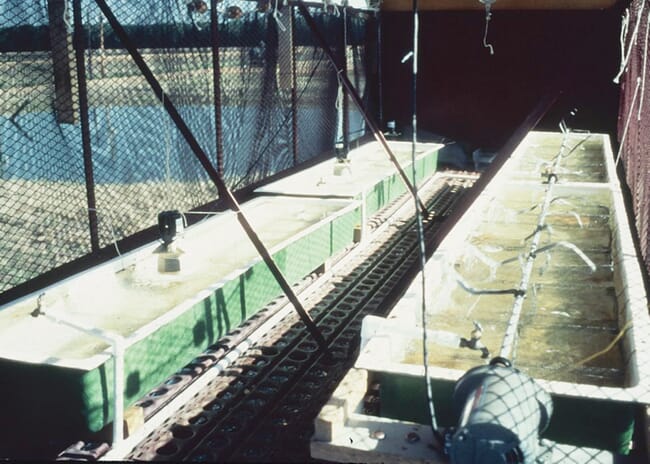
© Dr James Steeby, Mississippi State University
Fuel efficiency
Apart from feed, one of the main operational outlays in many farms is fuel. In pond production, traffic should be limited to the minimum amount necessary to produce the crop. Don’t allow trucks or tractors to wander around the facility during feeding operations. Study wind patterns and pond layouts and set up fuel-efficient feeding patterns for prevailing wind directions. The same considerations apply for workboats on net-pen operations. Similarly, with regard to electricity, when routinely replacing aerators, pumps or blowers, consider energy consumption as a critical specification. Performance curves matter.
Apart from equipment specs, aeration as a management practice is an area in which many aquaculturists can improve energy efficiency and reduce costs. Producers sometimes turn on aerators when they are not needed to avoid having to check on each pond or tank to determine when low oxygen concentrations are reached. This may or may not be cost effective, depending on the scale of the operation and the available labor. Remember that it takes significantly less energy to raise dissolved oxygen from 3 ppm to 5 ppm than it does from 5 ppm to 7 ppm. The cost difference between acceptable and optimal is an important consideration. Producers should be able to accurately determine dissolved oxygen levels in their systems to efficiently utilise aeration equipment, but most oxygen meters require regular calibration and maintenance to provide reliable results. Unfortunately, many producers neglect this type of operational detail, even though it can result in substantial energy savings, improved feed conversion and reduced oxygen- and disease-related losses.
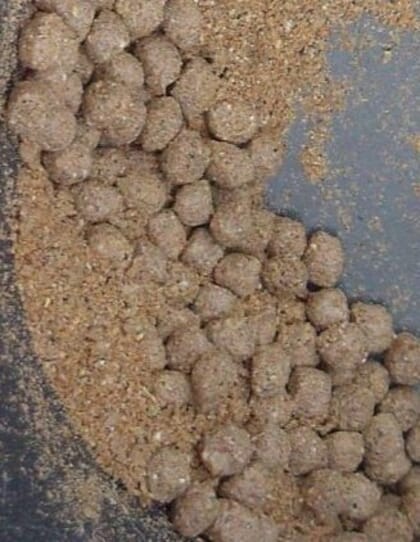
Feed efficiency
The greatest operational cost in almost every type of fish or crustacean farming is feed. Whenever possible, shop around for your feed supply. Compare prices and service, payment terms, quantity discounts and booking arrangements. When the industry is hurting, suppliers are usually hurting too, so they may be more willing to accommodate special requests. Consider factors such as formulation, palatability and digestibility, as well as “fines” – the crushed up pellet dust that can account for 2-3 percent or more of a feed purchase, depending on the source and handling procedures. Producers pay for these fines but they are rarely if ever used by the production species and often have a detrimental effect on water quality.
Consider your present feed conversion. A poor feed conversion can greatly impact profitability and economic survival. If it’s not where it should be, find out why. If you are unable to calculate your feed conversion… you may want to consider another type of business. Questions to consider include whether the animals are eating everything they are fed, whether they are utilising everything they eat, whether the feed quality is sufficient to support good growth and whether sufficient feed can be provided to result in efficient production within the limitations of the system.
Most aquatic species utilise their daily ration first and foremost to maintain their body weight and metabolism. Whatever is left over, if any, is utilised for growth. Some producers tend to overfeed in an effort to boost growth and production, but this practice actually results in poor feed conversion efficiencies and poor water quality due to excessive waste production. Conversely, in pond-based operations producers are limited in terms of how much feed they can put out each day by the ponds’ capacity to assimilate waste products. In many cases, stocking rates have increased to a point where efficiencies (in terms of feed conversion and survival) are actually lower than they were when densities and feeding rates were maintained at lower levels.
Perhaps one of the less obvious strategies for dealing with an economic downturn is knowledge. Producers must obtain the oxygen meters and test kits required to monitor water quality. You cannot manage what you do not measure. The next step is to learn what your water quality results really mean in terms of animal health. Finally, develop a record keeping system to capitalise on your investment in meters, test kits and knowledge. The more a producer understands why things occur in his or her production system and how to respond to problems, the greater the chances of economic survival.
Most of this advice involves weighing the costs and benefits of various operational practices. This, of course, assumes that good records are available as decision tools. To quote an extension agent I worked with years ago, “a producer can’t make a move if they don’t know where they stand”.


